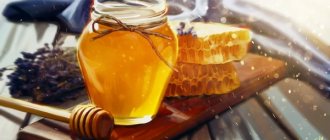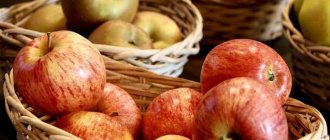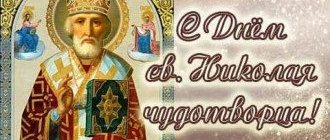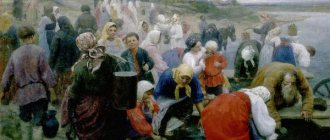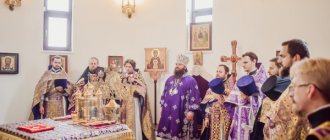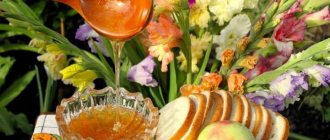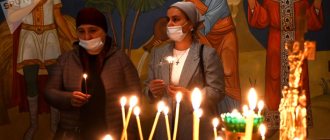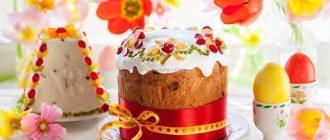August is rich in holidays dedicated to the gifts of nature and the harvest. People say about this time “Three Spas - three reserves” and celebrate Honey Spas on August 14, Apple Spas on August 19, and at the very end of the month, on the 29th, Nut Spas. On these same days, Orthodox Christians celebrate other events that have nothing to do with the harvest (the Slavic word “Spas” (Savior) is one of the theological names of Jesus Christ). We will tell you what these holidays are, why they are called that, and how they are usually celebrated in this article.
What about the people?
The people had their own traditions associated with the religious holiday. By mid-August, the honey of the new harvest is just in time - “the juice from the night dew, the one that bees collect from fragrant flowers.” The beekeepers cut out the first honeycombs from the hives and carried them to the temple for consecration. Christians perceived honey not just as a delicacy or a healthy product, but as the embodiment of God's grace and mercy. Gifts were given to children and the poor.
The traditional treat for Honey Spas is baked goods with honey: gingerbread cookies and pancakes. The main condition: that the sweets be lean. On August 14, Orthodox Christians begin the Assumption Fast.
The main drink of Honey Spas is nutritious honey. This honey was infused for ten years. The historian and culinary specialist William Pokhlebkin studied ancient recipes. The “staged” honey consisted of one third of berries and two thirds of honey itself. This mixture was aged in resin barrels for 10 to 40 years. The five-year med was considered the “rawest”. Honey vinegar and hops helped speed up the natural process.
Honey for health and longevity
The amber-colored sweet product was very valuable to our ancestors; it’s not for nothing that a whole holiday is dedicated to it. People loved the delicacy not only for its taste: at a time when there weren’t many medicines, honey was the most important of them.
They lubricated and healed wounds with it, like an antiseptic, they treated hundreds of chronic ailments, and they saved them from exhaustion on difficult days.
The composition of the beekeeping product is similar to a vitamin bomb. The entire group B is actively represented here, as well as vitamins C, A and folic acid.
And the amount of useful microelements - calcium, magnesium, phosphorus, iron, zinc - is off the charts.
A wide variety of healing properties were attributed to the honey collected on Honey Spas. It was believed that it could cure the most complex diseases.
"The Third Savior - Supplied Bread"
A solemn day on which they baked the first bread from the grain of the new harvest and thanked the Lord for their daily bread. The harvesting in the fields had already been completed, and the nuts were just ripening in the forest. Nut Spas is the time to prepare healing nut tincture for the winter. The housewives prepared it from walnut lintels. Freshly baked bread and nuts were served on this day.
We tried to celebrate the last holiday of summer generously and with soul. “If the third Savior is good, there will be kvass in winter.” On this day we saw off the birds and noted what kind of autumn to expect: if the crane flies to the third Savior, it will be frosty on Pokrov.
Three Spas in August: Honey, Apple, Nut – history, traditions, signs
In the last month of summer, Orthodox believers celebrate three major holidays, three Saviors - Honey, Apple and Bread (Nut).
Honey Spas
The very first Spas of August is invariably celebrated on August 14 and coincides with the beginning of the Dormition Lent.
At the heart of the first Savior is a holiday with a long name - the Descent of the Honest Trees of the Life-Giving Cross of the Lord.
The tradition of celebrating it came to us from Constantinople - it was here that part of the cross on which Jesus was crucified was kept. Once a year, the relic was taken out of the temple and they walked with it in a religious procession around the capital “to consecrate places and ward off diseases.” Later, such processions spread to Rus', only our ancestors wore the most ordinary cross.
Time passed and a new celebration joined the Feast of the Holy Cross. And it all started with a miracle...
In 1164, completely independently and at a considerable distance from each other, the Byzantine Emperor Manuel and the Russian Prince Andrei Bogolyubsky defeated their enemies. And both winners had the same sign: a radiance emanated from the cross of Christ, the icon of the Vladimir Mother of God and the image of the Savior, who were among the army. Manuel and Andrey sent messages to each other about their glorious victory and amazing spectacle. Imagine their amazement when it turned out that a miracle had been sent down to both of them at once! In honor of this great event, the date of the first Savior was set. Soon two celebrations - the Feast of the Cross of the Lord and the Savior - merged into one.
The first Spas has several names: Spas on the water, Wet, or Honey. In the temple on this day it is necessary to bless water, honey and poppy seeds, and believers take communion.
August 14, 988 (August 1, old style) is celebrated as the day of the beginning of the Baptism of Rus'. Since then, according to tradition, at this time old wells were cleaned or new ones were blessed, then a religious procession was made to rivers, ponds, and lakes to bless the water. After that, they bathed themselves and bathed the cattle in order to wash away their sins and be healthier.
This Spas is also called Honey Spas due to the fact that by this day the honeycombs in the hives are already filled with fresh honey and it’s time to start collecting. Only from the honey Savior was it allowed to eat honey consecrated by the church.
They say that even the air itself on the day of the First Savior is saturated with the aroma of honey. After all, the First Savior is a honey holiday, it is a holiday for beekeepers. Only after consecration is the first honey ready for consumption. Russians have long respected honey, because it is one of the healthiest and most delicious products. According to legend, a honey drink cured Ilya Muromets himself from paralysis.
Part of the honey was necessarily left in the church, part was used to treat the poor, and was also distributed to the homes of poor neighbors.
From this day on, beekeepers began collecting honey from overcrowded hives. Then the delicacy was taken to the church to be blessed, only after that they tasted the honey and treated it to loved ones. This is where the first, most famous name of Spas comes from - Honey.
By August 14, poppy harvesting began, from which various treats were made for the festive table. This is how Spas received its second name - Poppy, or Makovey. Folk tradition associated the Poppy Savior with the church day of remembrance of the seven Old Testament martyrs of the Maccabees.
On this day they asked the Lord and the saints for a good harvest and a hungry winter. They blessed water in springs and collected herbs for amulets.
The Savior was celebrated modestly, because by the beginning of August work related to the harvest was still in full swing - and there was no time for a magnificent holiday. After a hard day of work, celebrations were held, accompanied by dancing and songs, and treats with honey and poppy seeds, as well as mead, were on the table.
Apple Spas
The harvest festival, which is celebrated annually on August 19, is timed to coincide with a major church date - the Transfiguration of the Lord.
According to legend, from that day on nature turned towards autumn and turned away from summer. The earth was transformed and gave people a new harvest of fruits. Apples collected at the end of summer were taken to church to be blessed and then used to prepare Lenten treats.
On this holiday - the day of the Transfiguration of the Lord - the unification of the divine and human principles in the person of Jesus Christ is glorified. According to legend, to maintain faith in His disciples, when they saw His suffering, Jesus Christ showed them His divine face.
Shortly before the crucifixion, Jesus Christ ascended a high mountain with three disciples: James, Peter and John, to pray. Suddenly they saw that Jesus seemed to be transformed: His face shone like the sun, and His clothes became snow-white. Then two prophets appeared to them, Elijah and Moses, and had a conversation with Him about what awaited Him. At this, the hearts of the disciples were filled with extraordinary joy.
Since then, on August 19, people dressed in white go to Christian churches for the Divine Liturgy - this is the color of the Transfiguration.
Apple Spas is a symbol of the transformation of nature before the onset of autumn. It is believed that from mid-August the nights become cold. According to popular belief, apples finish ripening only on the Day of the Savior - until then you can only collect carrion, and believers do not eat apples at all until this day.
There is a belief that if parents do not eat an apple before the Second Savior, in the next world their children will be given gifts (including heavenly apples). But if the parents ate apples, then no. Therefore, most parents whose children have died consider it a great sin to eat apples before August 19th. And from this day on, you can pick various fruits from the new harvest, including apples.
In general, fruits are collected in order to bless: in Russia these are apples, and the first Christians traditionally brought grapes to the altar.
In villages it is customary to make apple jam, bake pies with apples and treat them to all neighbors and acquaintances. It is believed that apples blessed on the Transfiguration have special power: people, biting and swallowing the first piece, made wishes - it was believed that they would definitely come true.
They also say about Apple Spas - “the first autumns,” that is, the sign of autumn. This holiday is a reminder of the spiritual transformation of each of us.
Previously, it was customary after a church service to distribute blessed apples to everyone present. They handed them over to homes for the sick and infirm, treated all the holy fools and the homeless, and gave them to the poor and destitute.
According to legend, two birds fly to the apple tree from the Garden of Eden: Alkonost and Sirin, the bird of joy and the bird of sadness. The Sirin bird is the first to fly to the apple tree and peck at the apples, flapping its wings covered with dead dew. Therefore, someone who picks an apple ahead of schedule may end up with exactly the same one that was hit by that dew. The Alkonost bird flies to the Day of the Savior, shakes off the living dew from its wings. And from this day on, all the apples on the trees are transformed, become healing, and, according to legend, a life-giving force appears in them.
As we see, religious traditions are closely intertwined with pagan rituals. This holiday conventionally draws a line between the summer season and autumn, which is generous with gifts and brings with it the transformation of nature. The name of the holiday comes from the name of the Savior, who at the cost of his life brought to people who believed in him hope for eternal life and the grace of forgiveness.
On this day, some of the blessed apples were carried to the cemetery and placed on the graves of deceased relatives and close people. Ears of grain were also blessed, which were therefore well preserved until the next year.
Girls charmed apples to get married and be happy this year. While eating the fruit, they made a wish for the groom, saying: “What is wished for is far-fetched! What is far-fetched will come true! What will come true will not pass!
Despite the fact that work in the fields was still ongoing, the Apple Savior was especially revered, so folk festivals were organized with songs and dances.
The third one was saved in August
The third Savior of August, which is popularly called Bread, or Nut.
The holiday is celebrated on August 29. It was believed that by this day the hazel had ripened (it was collected in the forest and also blessed in churches), and the first bread was baked from the grain of the new harvest.
From August 29, it was allowed to eat this year's nuts. It was believed that the very first collection of hazelnuts must be blessed in the church and distributed to the suffering and poor in order to gain grace and health in the future.
The Savior is called the bread one because the day before the Dormition of the Most Holy Theotokos was celebrated, and with it they finished reaping bread. On this day, pies were baked only from new flour.
There is also a church name - Savior of the Image of Christ the Savior Not Made by Hands. In the Orthodox tradition, this story is associated with the sick king of Edessa, Abgarius, and Thaddeus’ visit to him after the artist he sent failed to depict Christ. Then Christ washed his face, wiped it with the cloth on which the imprint remained, and handed it to the artist. This miraculous image subsequently worked miracles more than once, healing people, until it was lost during the Fourth Crusade.
As the names suggest, the main dishes on this holiday are freshly baked bread from the new harvest flour and nuts. Bread was served on the festive table and treated to close people and neighbors. The oldest man in the family had to taste the bread first.
On the third Spas, people went into the forest to collect nuts, after which the entire harvest was poured onto a canvas, and a tablecloth was laid next to it, on which there were treats. The holiday was celebrated outdoors with a large circle of guests.
On this holiday they traded canvases and canvases. One of the strictest fasts, the Assumption fast, was ending, during which even vegetable oil could be eaten only on weekends and was observed from August 14 to 28. But this was not a burden, because it was allowed to eat berries, fruits, and mushrooms.
Based on materials from the sites Dailyhoro and “Scarlet Sails”
Holy water among the Pomeranians
If the Old Believers-chapels are characterized by precisely this tradition in the consecration and use of holy water, then the Pomeranians have slightly different ideas about holy water, and the blessing of water has its own characteristics.
For example, it is believed that on the feast of the Epiphany, holy water is everywhere, and the Pomeranians simply draw it at midnight from a spring or directly from the tap in the prayer house, and in the morning the mentor censes the water. Until the next feast of Epiphany, the Pomeranians wash themselves with this water, drink it, and use it as needed. They do not have a “small” blessing of water on August 1.
Old Believers especially emphasize that any grace of God that comes through the Holy Cross, holy icons, holy water, has power only for those who are worthy of this grace through repentance, humility, service to people, and alms. But if this is not the case, then grace will not save; it is useless for the wicked and imaginary Christians.
Author: Nina Lukyanova
Used materials
- “Transfer of the Image Not Made by Hands of Our Lord Jesus Christ”, page on the official website of the publishing house of the Moscow Patriarchate:
- Uspensky L. A. Theology of the icon of the Orthodox Church. Ch. II. The first icons of the Savior and the Mother of God. - M., 2008. - P. 25-27
- Menea. August, part 2, ed. Moscow Patriarchate, p. 127-128, 134:
- (troparion)
- (glorification)
- (kontakion)
[1] Troparion and kontakion of Hellenstia. Translation from Greek by Natalia Bakhareva. Source: Great Book of Hours (Ωρολογιον το μεγα). Athens, 2003, .
[2] Option: “lika”
[3] option: “image”
.
How to determine the quality of honey at home?
It is worth understanding this issue in order to get the maximum benefit from this nectar.
- The first thing we can check is viscosity. When poured, natural honey stretches as a continuous thread and forms a mound. A hole during transfusion or dripping, instead of a smooth flow, is a sign of a fake.
- There is a difference when converting weight from kilograms to milliliters. -1 kg of honey is approximately 800 ml.
- Good honey has the characteristic smell of the honey plant from which it is collected.
- 4 . Distinctive feature - Liquid honey can only be downloaded or the following varieties:
Acacia honey remains liquid for several years, like vegetable oil. Over time, it gradually thickens, but remains without a crystal. All other varieties thicken and shrink.
Linden honey remains liquid for a long time. Then it acquires a snow-white buttery consistency. Real linden honey tastes like medicine. In general, natural honey has a bitter taste and can even irritate your throat. This is a good sign of quality and endurance.
Chestnut, a dark variety of honey, has a brown tint. The liquid state remains for about 6 months. With proper storage - for a whole year. After sugaring, the color does not change, the crystals constantly increase.
Sweet clover also remains liquid for several months, then shrinks.
Everything else that is presented in liquid form in autumn and winter is most likely a heated type of honey or sugar syrup.
- Natural honey can become sugary over time, depending on the variety. (The size of the crystal (grain) depends on the amount of glucose in honey). In addition, do not forget that honey is a living product.
- When mixing a small portion of honey with the addition of water on a plate, it should form a hexagon, the natural shape of a honeycomb - this is due to the genetic memory that it possesses.
Maccabean Martyrs
An example of the firmness of faith is shown to us by the seven brothers of the Maccabees, instructed by the teacher Eliazar in the customs of the Israeli people: Abim, Antoninus, Gurias, Eliazar, Eusevo, Alim and Markel and their mother Solomonia. They lived in the 2nd century before the birth of Christ and suffered under the king of Syria, Antiochus IV Epiphanes, who enslaved the Jewish people. He introduced Greek pagan customs into Judea, desecrated the Temple of Jerusalem, and placed pagan idols in it. The Jews were forced to apostatize from the faith of their fathers and worship idols.
Elder Eleazar, a teacher of the law, was condemned for adherence to the Law of Moses. His disciples, the Maccabee brothers, also fearlessly confessed their faith in the True God and refused to make sacrifices to the pagan gods. In front of their mother's eyes, they endured torture and torment. The king suggested that Solomonia persuade the children to renounce in order to save their lives. The saint, on the contrary, strengthened the sons in confessing the faith of their fathers. Over the bodies of her sons, she offered a prayer of gratitude to God and died. The feat of the holy martyrs inspired Judas Maccabee, who rebelled against Antiochus. Having won the victory, the Jews cleared the Temple of Jerusalem of idols.
The saints rejected pagan morals, preserving the customs and rules bequeathed by their fathers. And, although they suffered even before the incarnation of Christ, they are in no way inferior to those who followed the Lord after them. Even then, they had faith in Christ and hope for the resurrection, which helped to overcome all fears of torture and torment.
